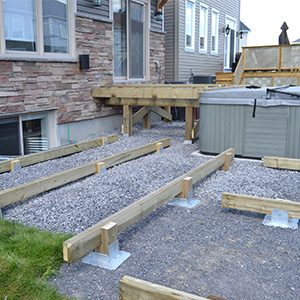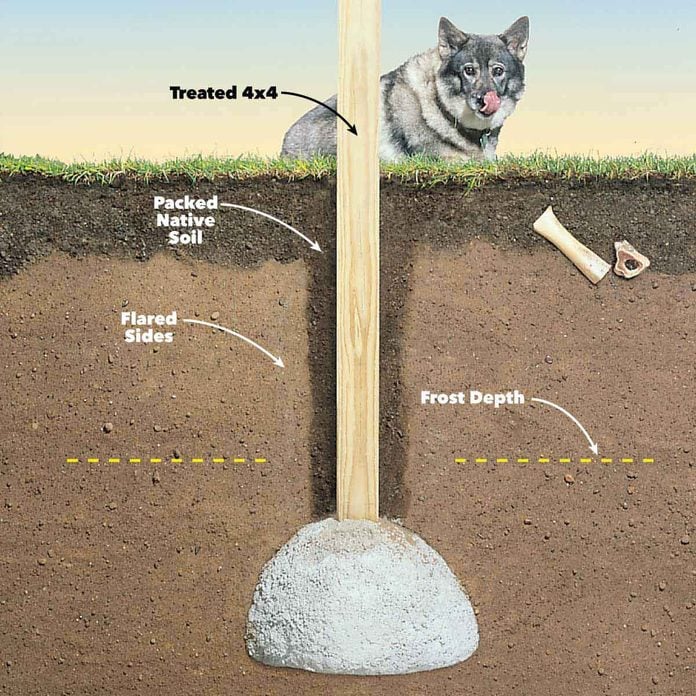Structural Integrity Matters: Selecting the Right Deck Footings for Your Outdoor Job
Make Certain Security and Longevity With Correctly Installed Deck Grounds
Deck footings might not be one of the most glamorous element of deck construction, but they play a vital role in making certain security and longevity. Appropriately set up grounds give a strong foundation for your deck, stopping typical problems like sagging, moving, and also collapse. Nevertheless, selecting the ideal kind of ground and appropriately installing it can be an intricate process. In this discussion, we will check out the importance of proper deck footings, elements to take into consideration throughout setup, various types of footings offered, detailed installment guide, and upkeep suggestions for ensuring resilient footings. So, if you wish to guarantee the stability and longevity of your deck, maintain checking out to find the key insights to accomplish a sturdy and structurally audio outdoor space.

Importance of Appropriate Deck Grounds
Why are properly installed deck footings important for the security and durability of your deck? Deck grounds are the foundation on which the deck rests, transferring the tons from the deck to the ground.
First of all, correctly mounted deck grounds disperse the weight of the deck uniformly, stopping any type of unequal settling or sinking. This is especially essential in areas with unstable soil, as it assists to mitigate the danger of the deck breaking down or changing. Additionally, well-installed footings make certain that the deck stays level, protecting against any kind of structural damages that can occur when a deck ends up being irregular.
Secondly, correctly mounted grounds supply a strong anchor for the deck, protecting against extreme motion and guide. This assists to maintain the architectural honesty of the deck, lowering the danger of mishaps or injuries. It additionally reduces the wear and tear on the deck, permitting it to stand up to the elements and normal use for a longer time period.
Variables to Think About for Deck Footing Setup
When mounting deck grounds, there are numerous vital aspects to take into consideration for proper installation. Different dirt kinds have different load-bearing capacities, so it is important to carry out a soil examination to make certain the grounds can sustain the weight of the deck and its owners. By taking right into account these aspects, you can make sure the appropriate installation of deck grounds and appreciate a steady and lasting deck.
Sorts Of Deck Footings to Select From
There are numerous various sorts of deck grounds offered for you to pick from. Each type has its very own benefits and drawbacks, so it's important to consider your particular demands and the problems of your deck before making a choice.
One typical type of deck footing is the concrete footing. This involves digging holes in the ground and putting concrete right into them to develop a strong foundation. Concrete footings are durable and provide excellent security, making them ideal for decks in locations with difficult soil conditions or high wind lots.
An additional choice is the helical pier footing, which consists of a steel shaft with helical plates that are screwed right into the ground. These grounds fast to install and can be utilized in different soil kinds, consisting of sandy or clay soils. They are additionally flexible, enabling easy progressing of the deck.
Sonotube footings are another preferred choice. These grounds are produced by placing a cardboard tube in an opening and filling it with concrete. Sonotube footings are reasonably simple to install and give appropriate stability for smaller sized decks or in locations with much less demanding dirt conditions.

When selecting the type of deck footing, it's vital to take into consideration variables such as soil problems, deck size and weight, regional building ordinance, and individual preferences. By choosing the proper ground type, you can make sure the stability and durability of your deck.
Step-by-Step Guide for Putting Up Deck Footings

Determine the click for more place: Begin by noting the specific position of each ground using stakes and string (Deck Footings). Take right into account any type of local building ordinance or guidelines relating to obstacle ranges
Dig the openings: Make use of a post hole digger or an auger to dig the openings for the grounds. Generally, a depth of at least 36 inches is advised for security.
Level the holes: Make sure that all-time lows of the holes are level (Deck Footings). This can be achieved by utilizing a degree or a straight board throughout the top of the openings
Include gravel: Place a layer of gravel at the end of each hole to improve drain and stop the ground from sinking right into the dirt over time.
Insert the footing types: Place the ground creates right into the holes, guaranteeing they are focused and degree. Usage risks to safeguard them in place.
Mix and pour concrete: Follow the instructions on the concrete mix bag to prepare the concrete. Pour the concrete into the footing types, filling them totally.
Smooth the surface area: Use a trowel to smooth the surface area of the concrete this link and remove any type of air pockets. Permit the concrete to heal according to the maker's directions.
Maintenance Tips for Lasting Deck Footings
Proper maintenance is vital for making certain the long life and security of deck footings. By consistently evaluating and keeping your deck grounds, you can avoid damage and potential safety and security threats. One vital facet of maintenance is to frequently look for any indicators of degeneration, such as fractures or movement in the grounds. If you observe any type of issues, it is vital to resolve them quickly to avoid more damage.
Normal cleaning is likewise crucial for preserving deck grounds. Dust, greenery, and particles can build up around the grounds, which can lead to moisture accumulation and degeneration. Cleaning the footings consistently, using a stress or a brush washer, can help avoid these problems and expand the lifespan of your deck.
Along with cleansing, it is important to keep the area around the grounds free from any obstructions. Prevent piling things versus the grounds or permitting plants to grow too near to them. These blockages can catch dampness and cause the footings to weaken gradually.
Last but not least, normal resealing of the footings is recommended to safeguard them from moisture and various other ecological variables. Using a waterproof sealant can help prevent water damage and extend the lifespan of the footings.
Final Thought
To conclude, appropriate installment of deck footings is important for making sure security and durability of your deck. Aspects such as soil type, tons capability, and local building ordinance need to be considered read this when choosing the appropriate sort of deck footings. Complying with a step-by-step guide for installment and normal upkeep will help to guarantee the footings remain durable and durable.
In this conversation, we will explore the relevance of proper deck grounds, aspects to take into consideration during installation, various types of grounds offered, step-by-step installation overview, and upkeep suggestions for ensuring durable grounds. Deck footings are the structure on which the deck rests, transferring the tons from the deck to the ground.One common kind of deck footing is the concrete footing. Put the footing kinds: Place the footing develops into the openings, ensuring they are focused and level.In verdict, appropriate installation of deck grounds is important for guaranteeing security and longevity of your deck.